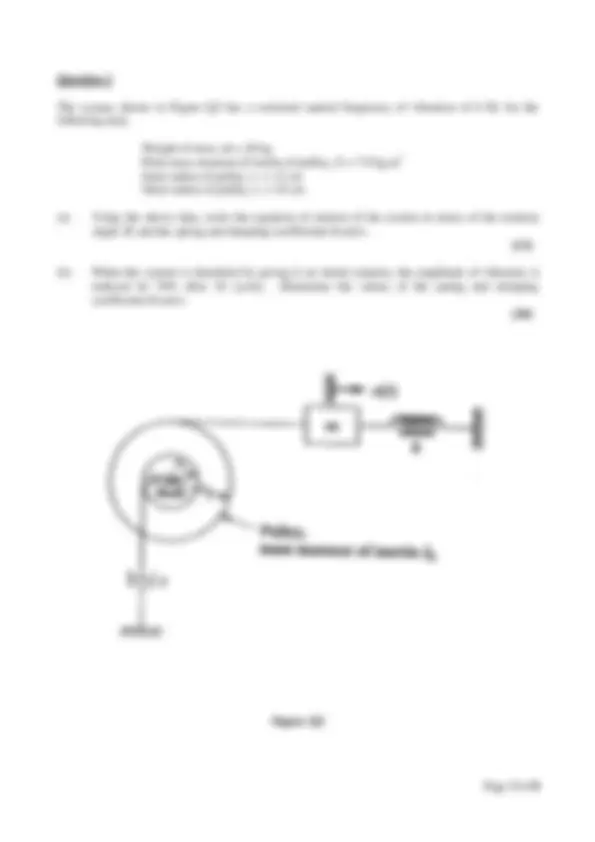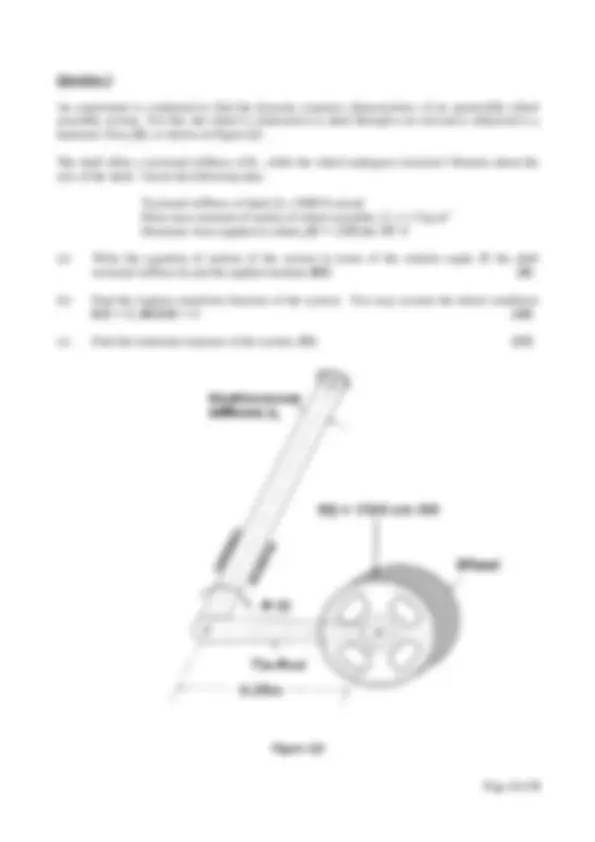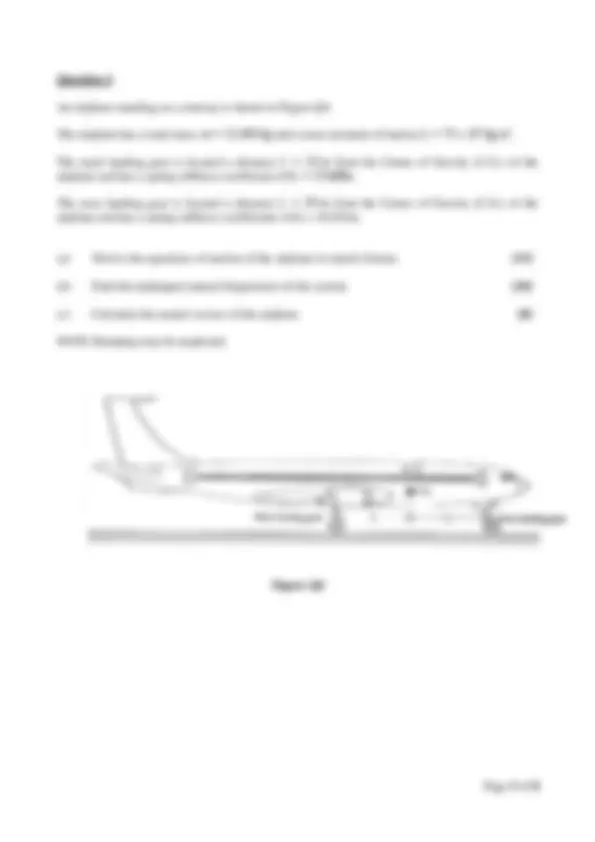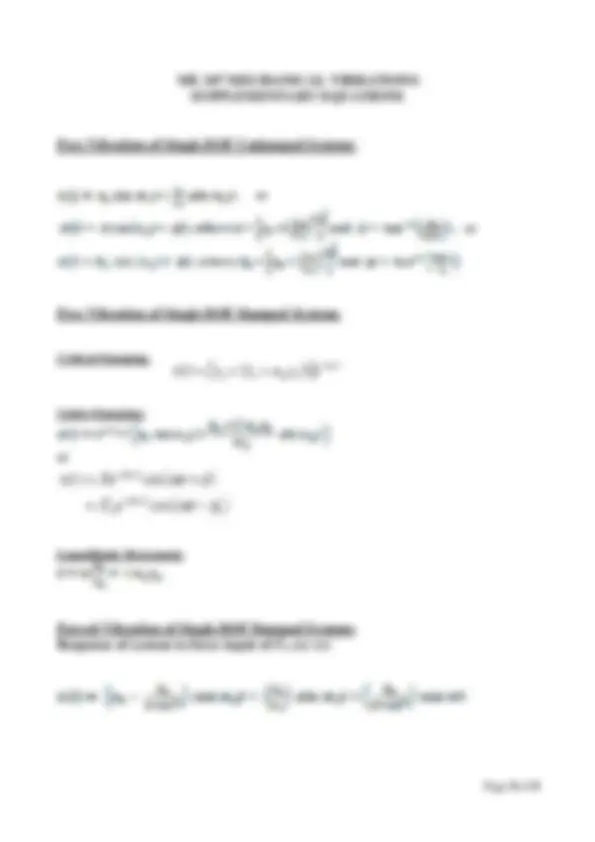






Study with the several resources on Docsity

Earn points by helping other students or get them with a premium plan


Prepare for your exams
Study with the several resources on Docsity

Earn points to download
Earn points by helping other students or get them with a premium plan
Community
Ask the community for help and clear up your study doubts
Discover the best universities in your country according to Docsity users
Free resources
Download our free guides on studying techniques, anxiety management strategies, and thesis advice from Docsity tutors
Main points of this past exam are: Strikes, Sledge-Hammer Strikes, Anvil, Velocity, Hammer, Springs, Motion, Vibration, Natural Frequency, Expression
Typology: Exams
1 / 8

This page cannot be seen from the preview
Don't miss anything!





Exam Code(s) 3BM, 3BES
Exam(s) 3 rd^ Mechanical Engineering 3 rd^ Energy Systems Engineering
Module Code(s) ME Module(s) Mechanical Vibrations
Paper No. 1 Repeat Paper
External Examiner(s) Professor Robin Clarke Internal Examiner(s) Professor Sean Leen Dr. Conchúr Ó Brádaigh
Instructions: (^) Answer 3 questions. All questions carry equal marks.
No. of Pages 8 Department(s) Mechanical & Biomedical Engineering Course Co-ordinator(s) Dr. Conchúr Ó Brádaigh
Requirements: Statistical/Log tables Mathematical tables Laplace Transform Tables Handout (2 pages) Supplementary Equations (1 page) Graph Paper
Release to Library: Yes
Question 1
A sledge-hammer strikes an anvil with a velocity of 30 m/sec (Figure Q1). The hammer and the anvil weigh 50 kg and 500 kg, respectively. The anvil is supported on four springs as shown, each of stiffness k = 200 kN/m.
Find (i) the equation of motion of the system; (ii) the natural frequency of vibration of the system; and (iii) the expression for vertical motion of the system in time; for each of the following cases:
(a) the hammer remains in contact with the anvil after impact [15]
(b) the hammer does not remain in contact with the anvil after the initial impact [18]
You may assume that the anvil is restrained to move in the vertical direction only.
Figure Q
Question 3
An experiment is conducted to find the dynamic response characteristics of an automobile wheel assembly system. For this, the wheel is connected to a shaft through a tie rod and is subjected to a harmonic force f(t), as shown in Figure Q3.
The shaft offers a torsional stiffness of k (^) t , while the wheel undergoes torsional vibration about the axis of the shaft. Given the following data:
Torsional stiffness of shaft, k (^) t = 5000 N.m/rad Polar mass moment of inertia of wheel assembly, J 0 = 1.5 kg.m^2 Harmonic force applied to wheel, f(t) = 1500 sin 50t N
(a) Write the equation of motion of the system in terms of the rotation angle, θ , the shaft torsional stiffness k (^) t and the applied moment M(t). [8]
(b) Find the Laplace transform function of the system. You may assume the initial conditions θ(0) = 0; dθ(0)/dt = 0. [10]
(c) Find the rotational response of the system, θ(t). [15]
Figure Q
Question 4
An airplane standing on a runway is shown in Figure Q4.
The airplane has a total mass, m = 25,000 kg and a mass moment of inertia J 0 = 75 x 10^6 kg.m^2.
The main landing gear is located a distance l 1 = 20 m from the Centre of Gravity (C.G.) of the airplane and has a spring stiffness coefficient of k 1 = 20 kN/m.
The nose landing gear is located a distance l 2 = 30 m from the Centre of Gravity (C.G.) of the airplane and has a spring stiffness coefficients of k 2 = 10 kN/m.
(a) Derive the equations of motion of the airplane in matrix format. [15]
(b) Find the undamped natural frequencies of the system [10]
(c) Calculate the modal vectors of the airplane [8]
NOTE: Damping may be neglected.
Figure Q
; or
; or
Critical Damping:
Under-Damping:
or
Logarithmic Decrement:
t n
d t
d t
n
n